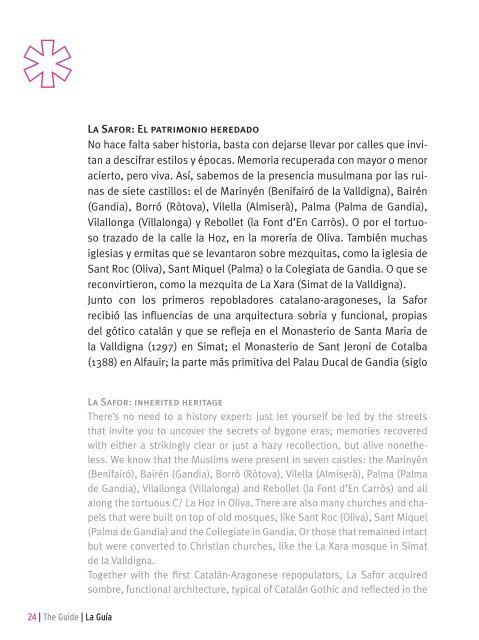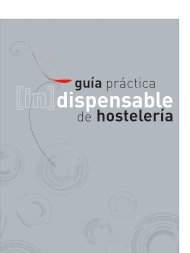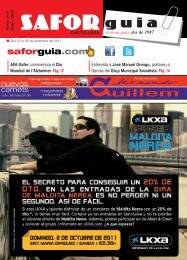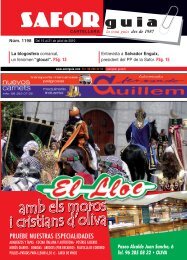You also want an ePaper? Increase the reach of your titles
YUMPU automatically turns print PDFs into web optimized ePapers that Google loves.
24 | The Guide | La <strong>Guía</strong><br />
La <strong>Safor</strong>: El patrimonio heredado<br />
No hace falta saber historia, basta con dejarse llevar por calles que invitan<br />
a descifrar estilos y épocas. Memoria recuperada con mayor o menor<br />
acierto, pero viva. Así, sabemos de la presencia musulmana por las ruinas<br />
de siete castillos: el de Marinyén (Benifairó de la Valldigna), Bairén<br />
(Gandia), Borró (Ròtova), Vilella (Almiserà), Palma (Palma de Gandia),<br />
Vilallonga (Villalonga) y Rebollet (la Font d’En Carròs). O por el tortuoso<br />
trazado de la calle la Hoz, en la morería de Oliva. También muchas<br />
iglesias y ermitas que se levantaron sobre mezquitas, como la iglesia de<br />
Sant Roc (Oliva), Sant Miquel (Palma) o la Colegiata de Gandia. O que se<br />
reconvirtieron, como la mezquita de La Xara (Simat de la Valldigna).<br />
Junto con los primeros repobladores catalano-aragoneses, la <strong>Safor</strong><br />
recibió las influencias de una arquitectura sobria y funcional, propias<br />
del gótico catalán y que se refleja en el Monasterio de Santa Maria de<br />
la Valldigna (1297) en Simat; el Monasterio de Sant Jeroni de Cotalba<br />
(1388) en Alfauir; la parte más primitiva del Palau Ducal de Gandia (siglo<br />
La <strong>Safor</strong>: inherited heritage<br />
There’s no need to a history expert: just let yourself be led by the streets<br />
that invite you to uncover the secrets of bygone eras; memories recovered<br />
with either a strikingly clear or just a hazy recollection, but alive nonetheless.<br />
We know that the Muslims were present in seven castles: the Marinyén<br />
(Benifairó), Bairén (Gandia), Borró (Ròtova), Vilella (Almiserà), Palma (Palma<br />
de Gandia), Vilallonga (Villalonga) and Rebollet (la Font d’En Carròs) and all<br />
along the tortuous C/ La Hoz in Oliva. There are also many churches and chapels<br />
that were built on top of old mosques, like Sant Roc (Oliva), Sant Miquel<br />
(Palma de Gandia) and the Collegiate in Gandia. Or those that remained intact<br />
but were converted to Christian churches, like the La Xara mosque in Simat<br />
de la Valldigna.<br />
Together with the first Catalán-Aragonese repopulators, La <strong>Safor</strong> acquired<br />
sombre, functional architecture, typical of Catalán Gothic and reflected in the

















